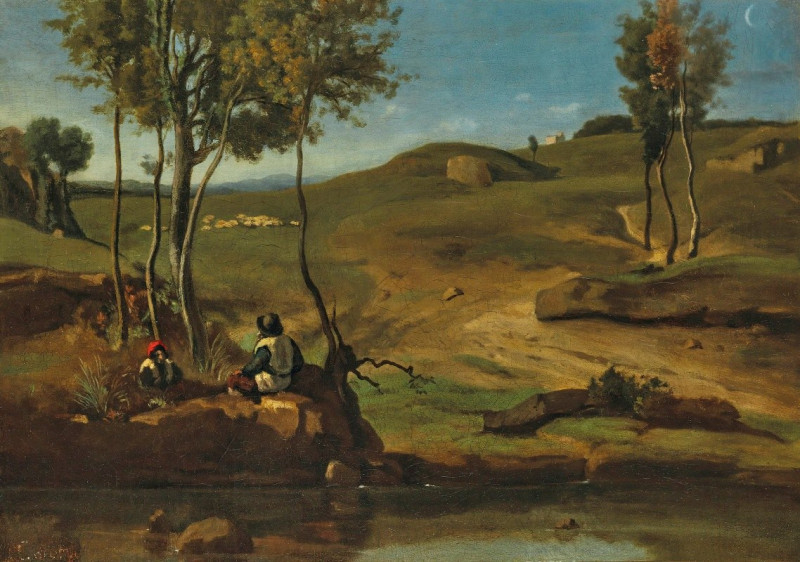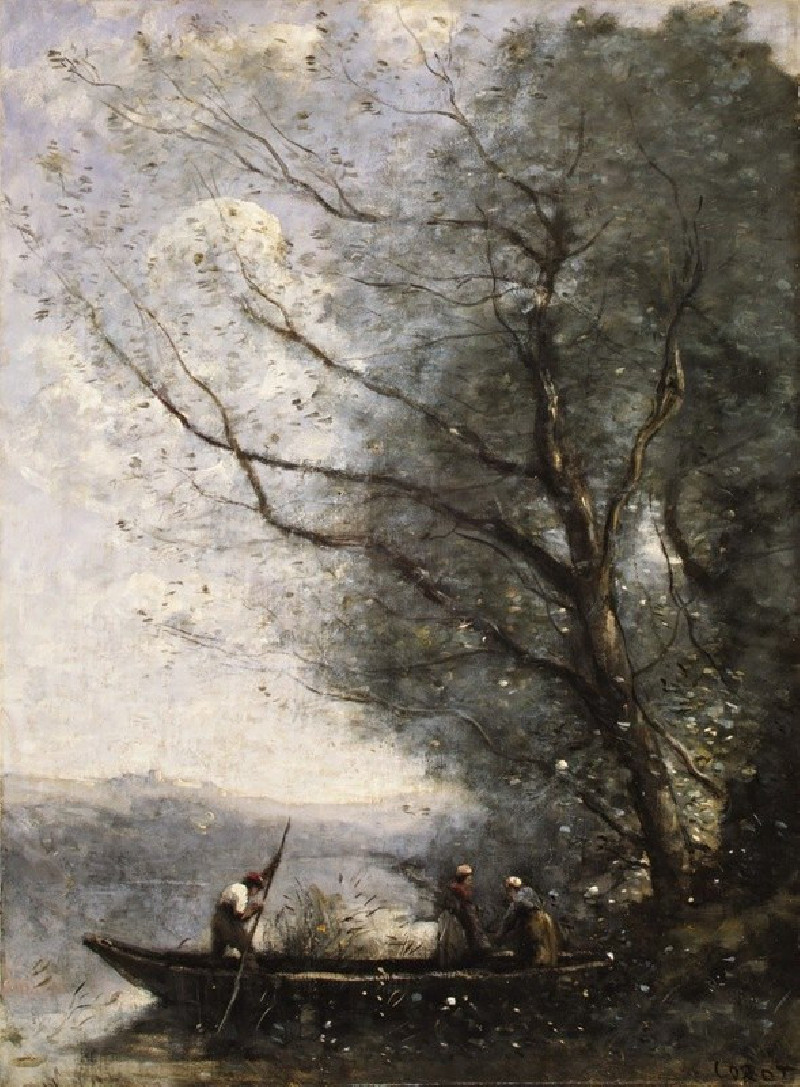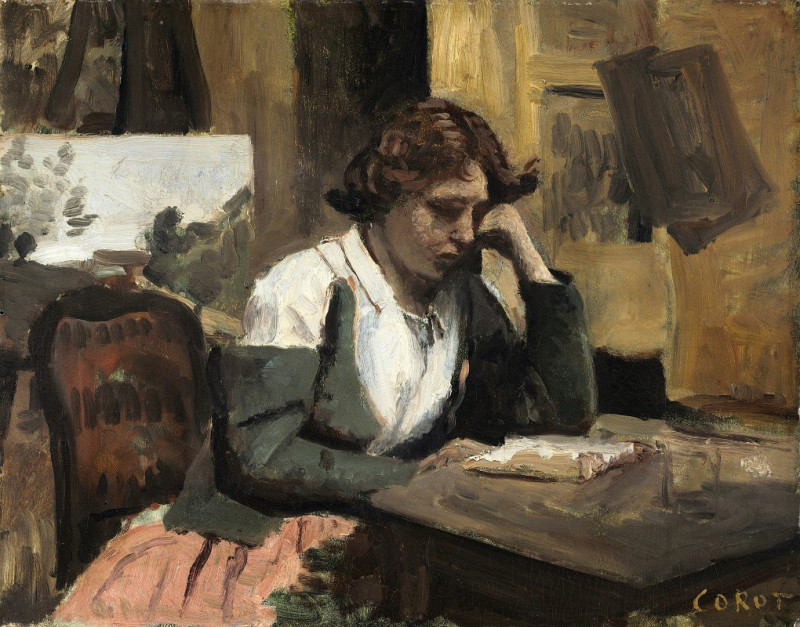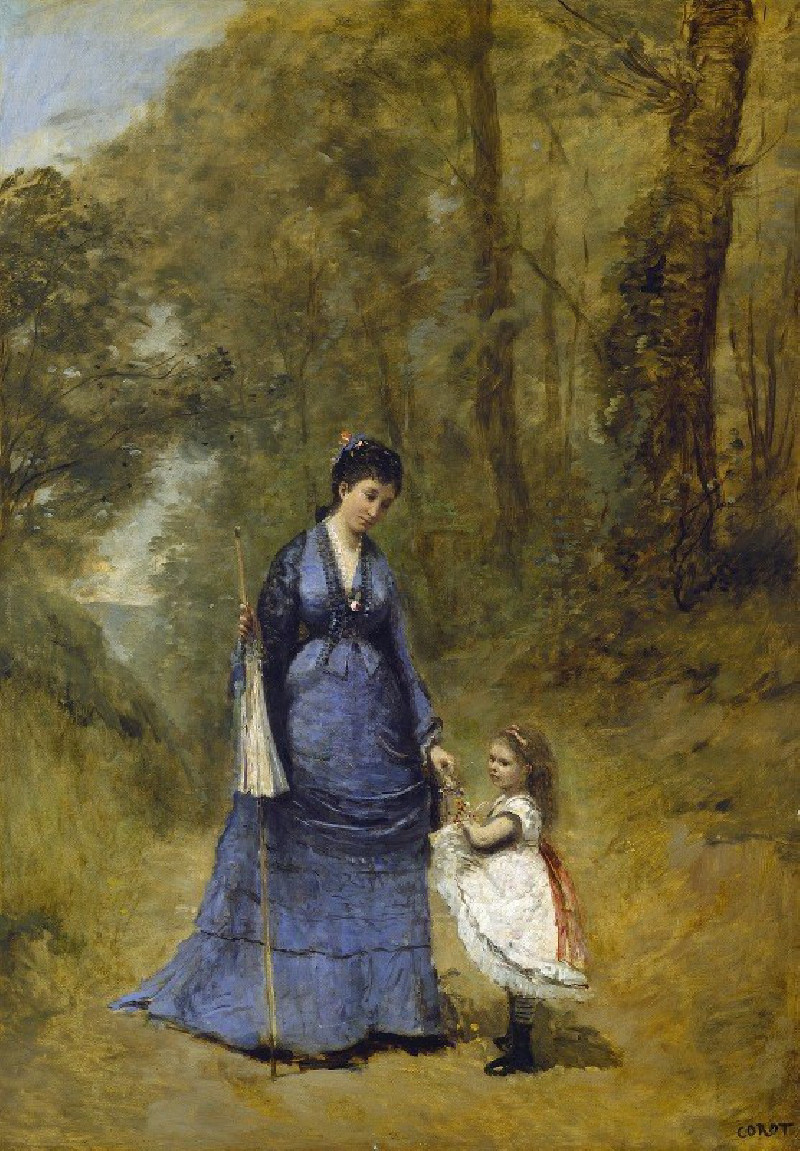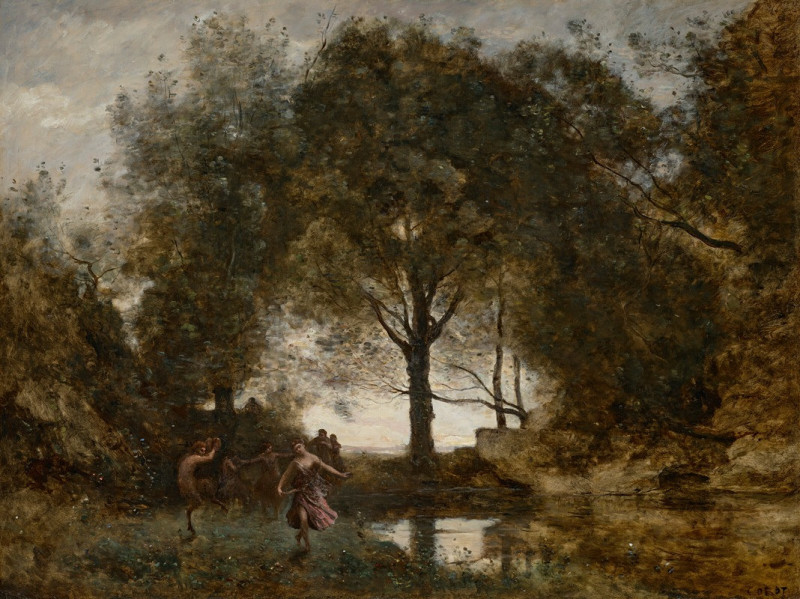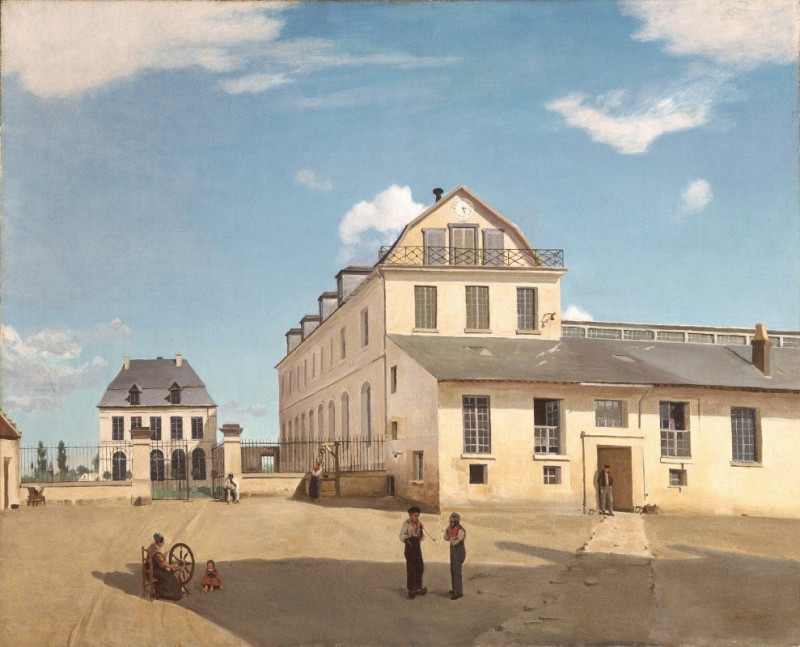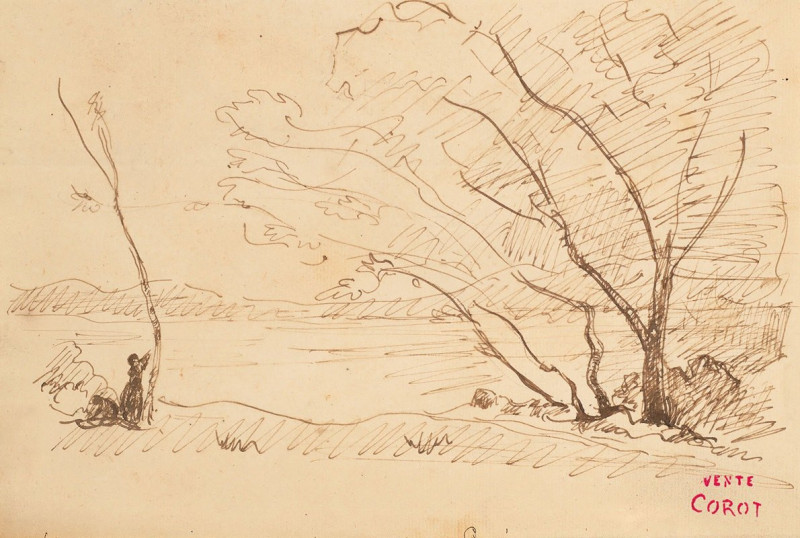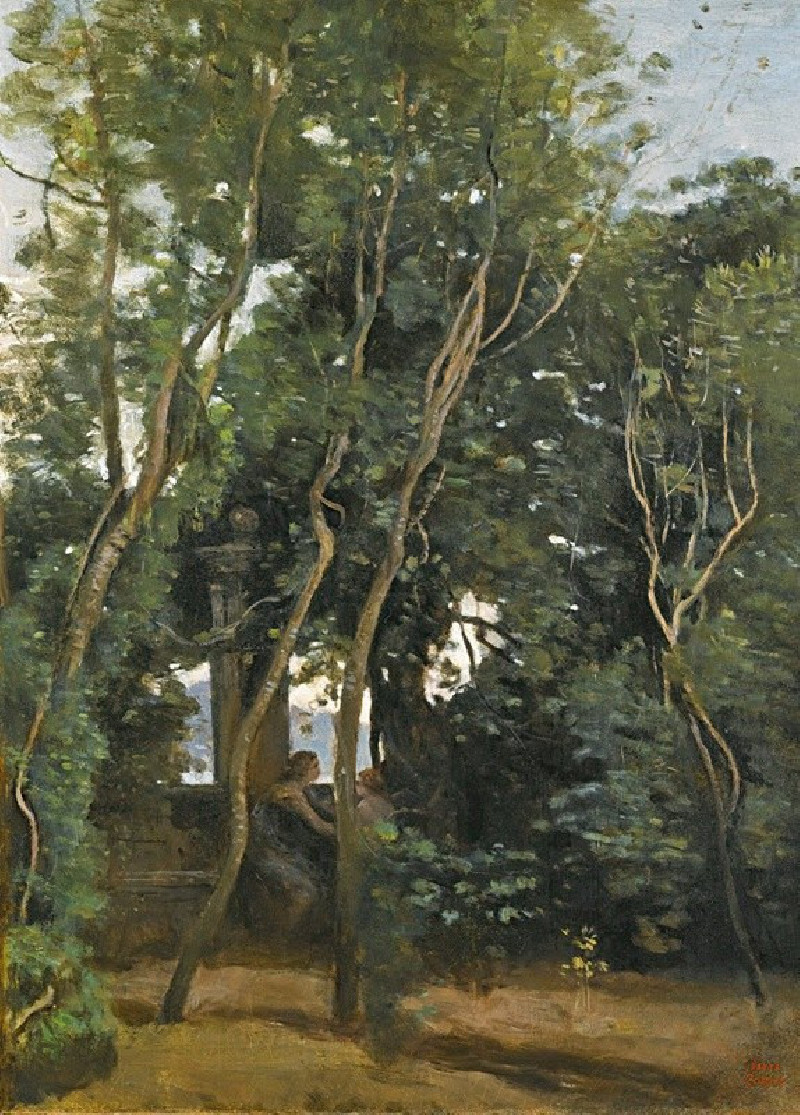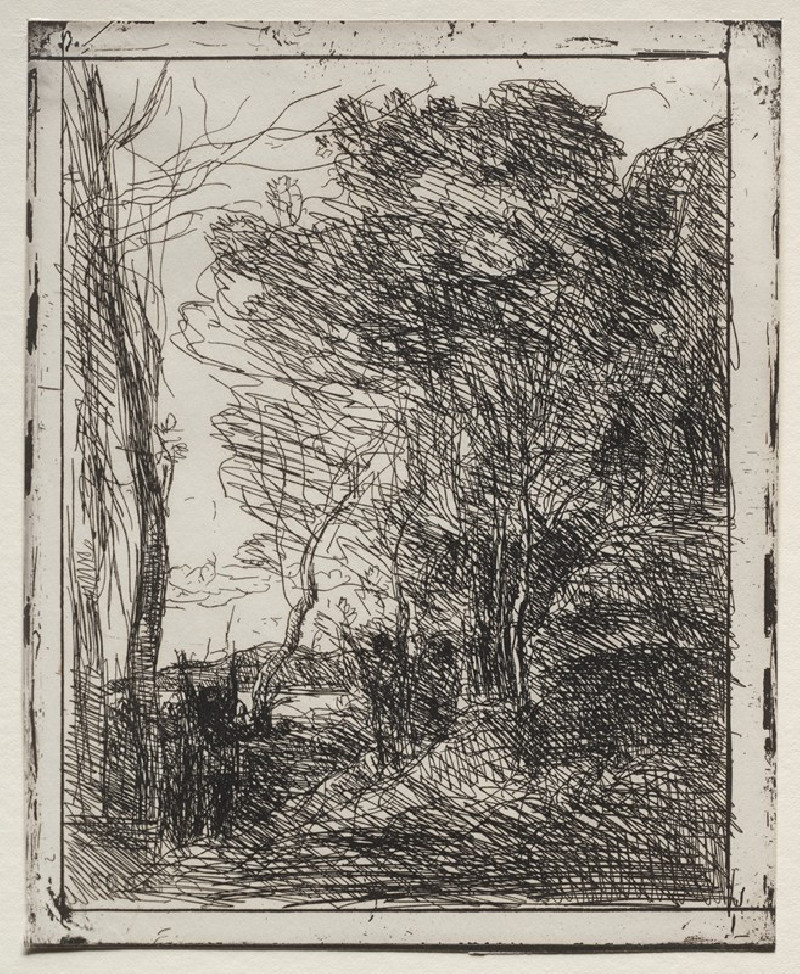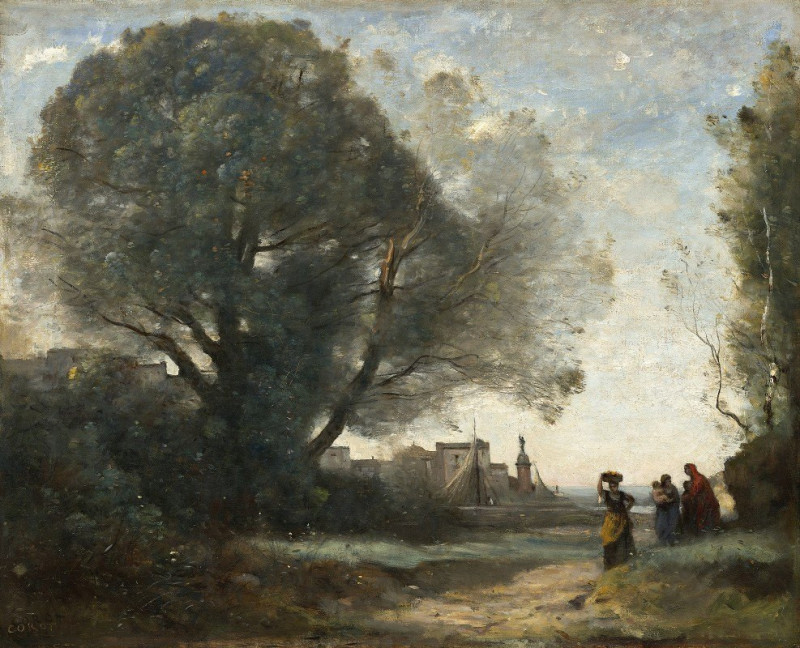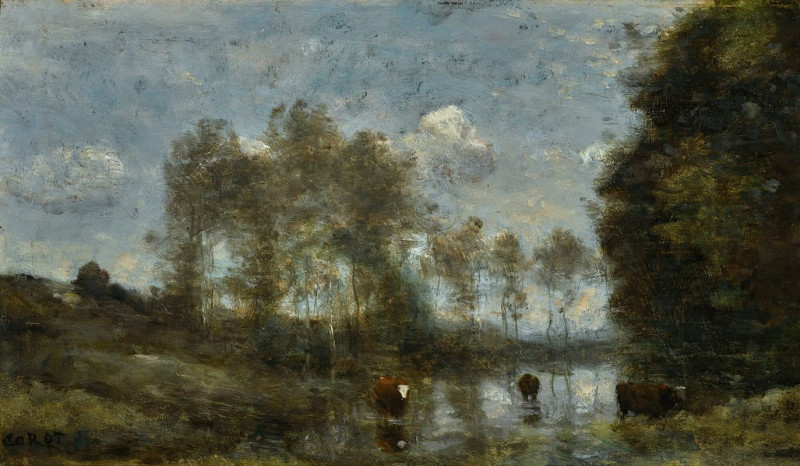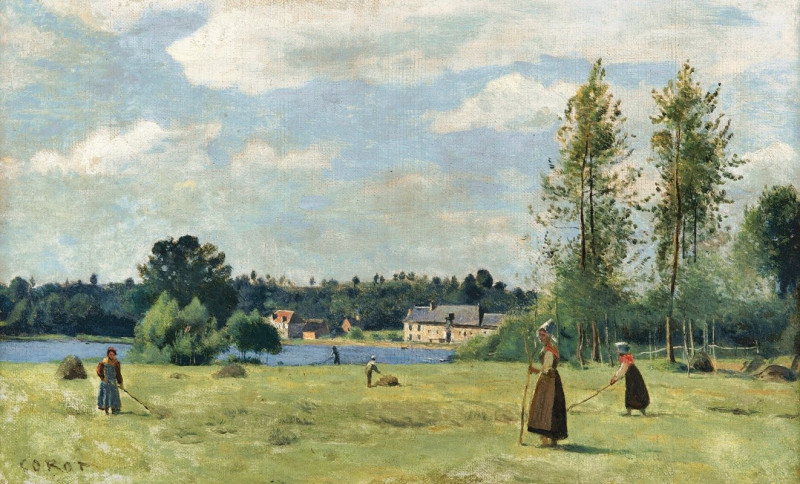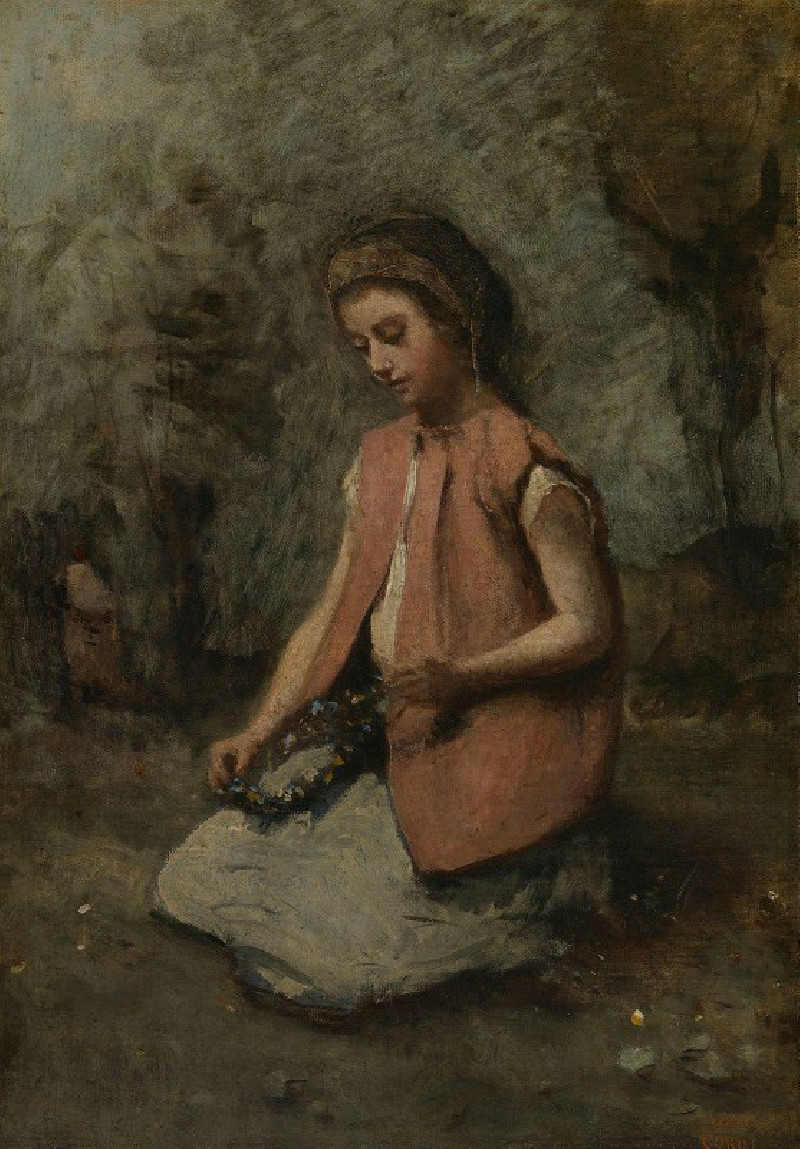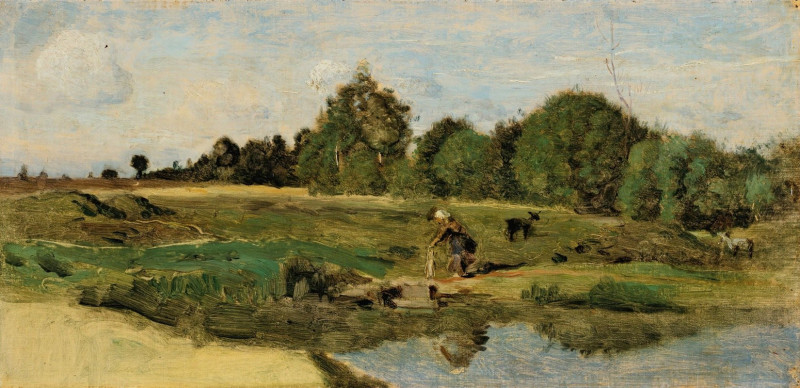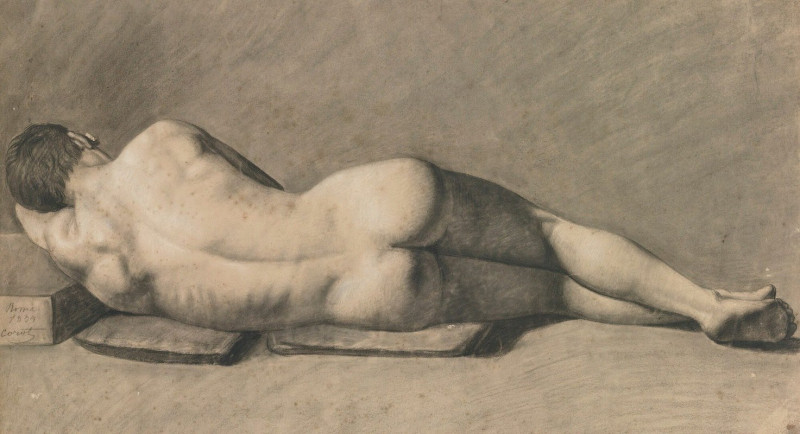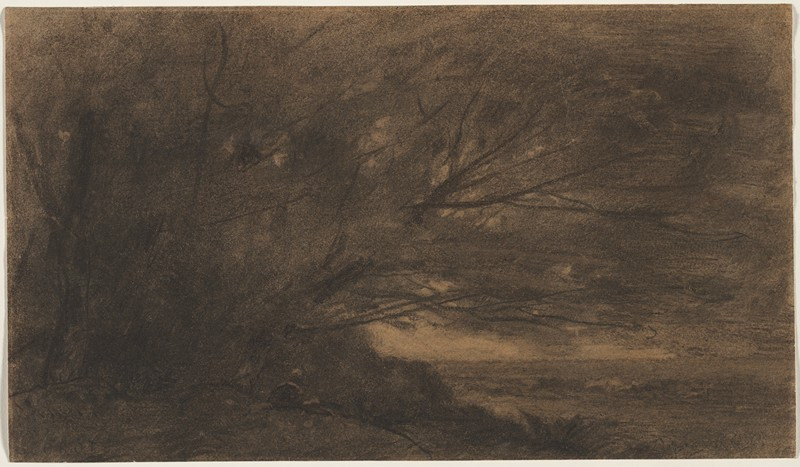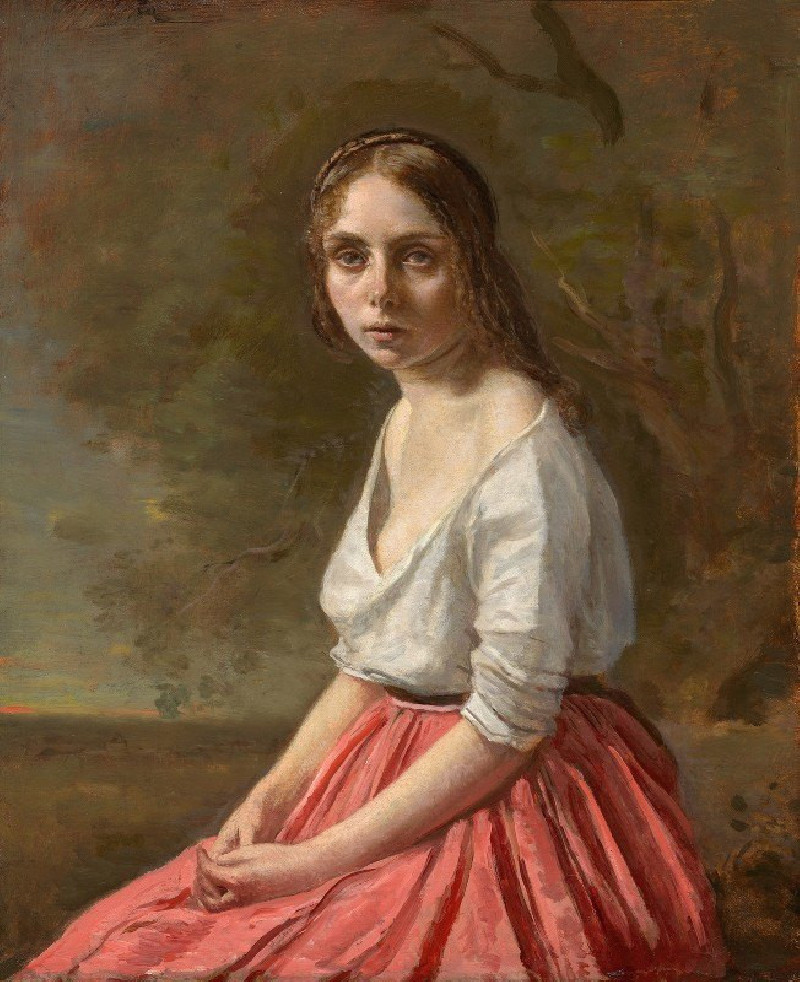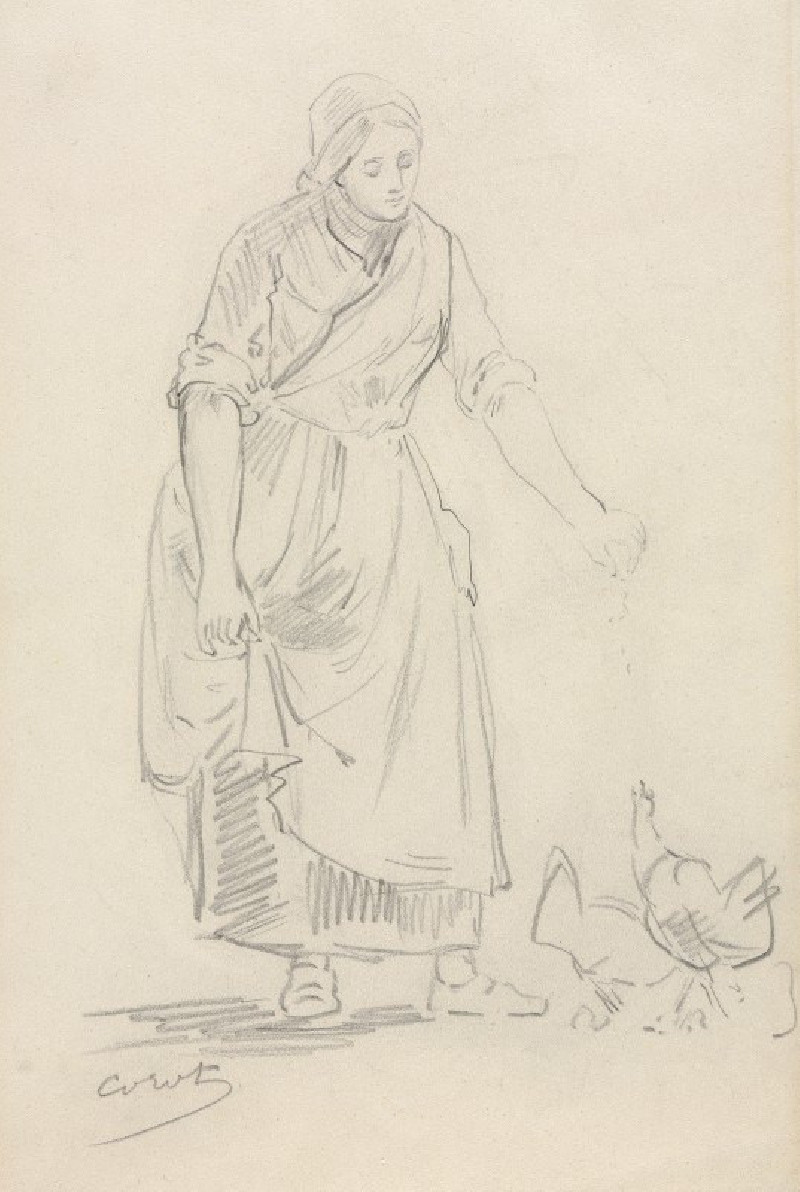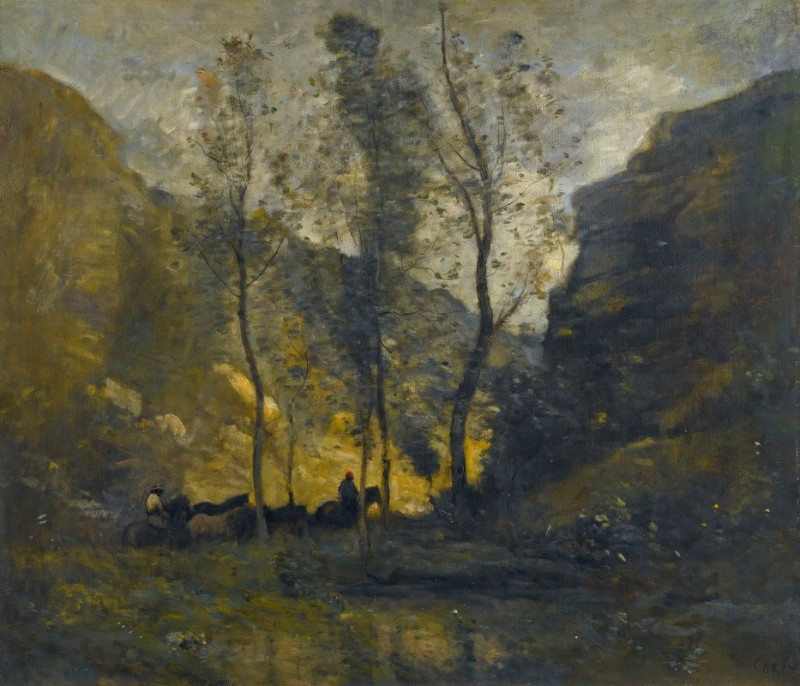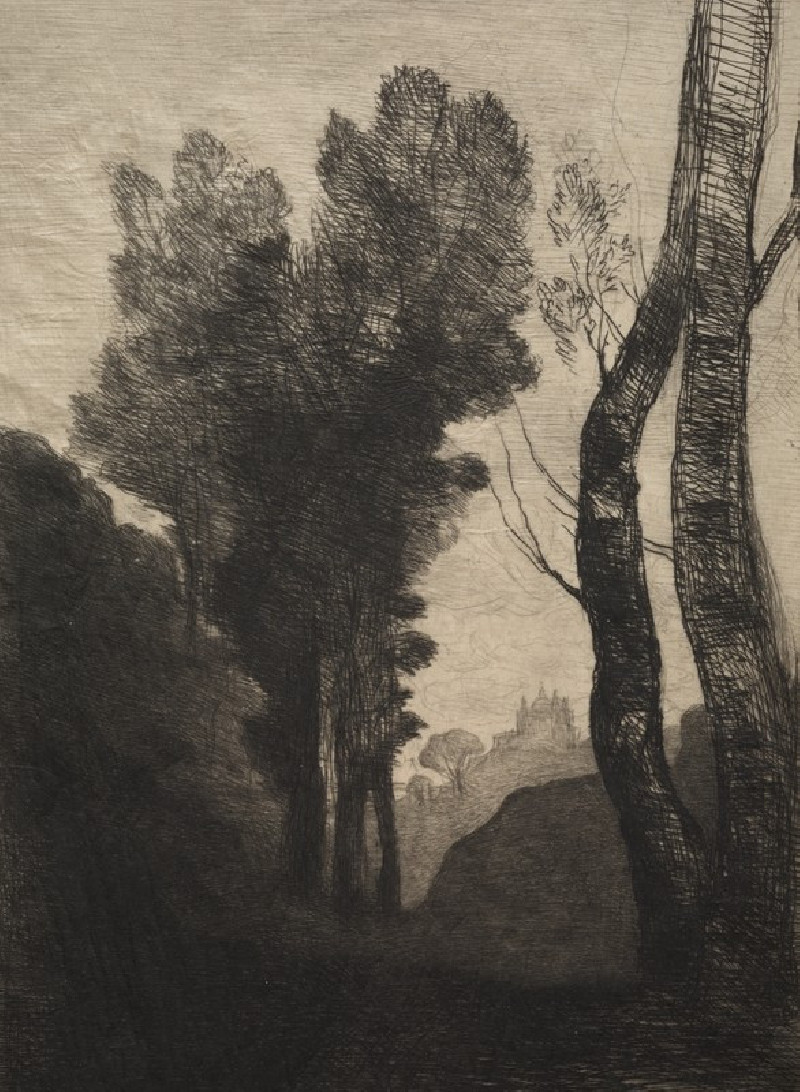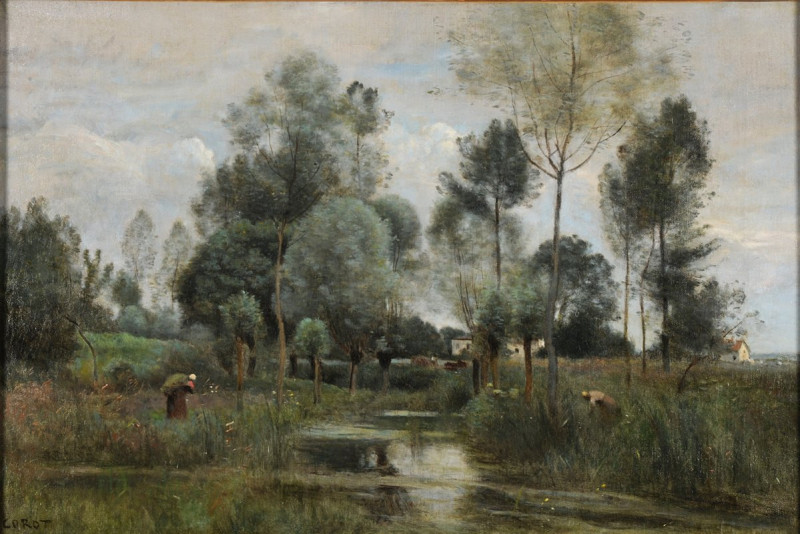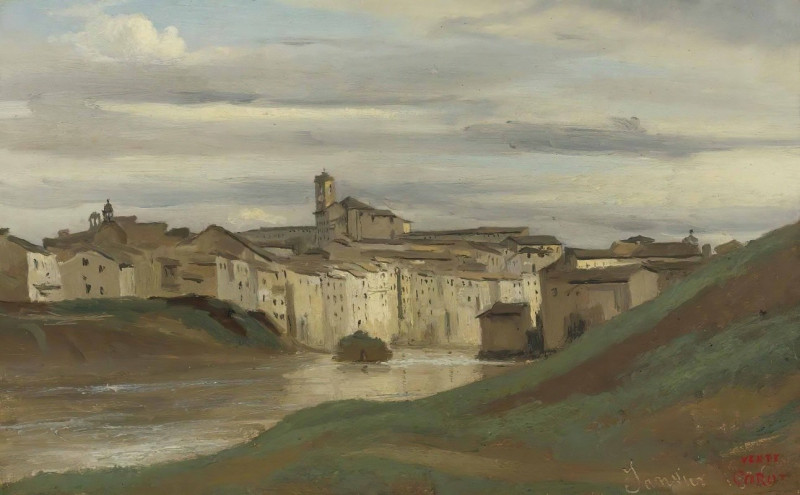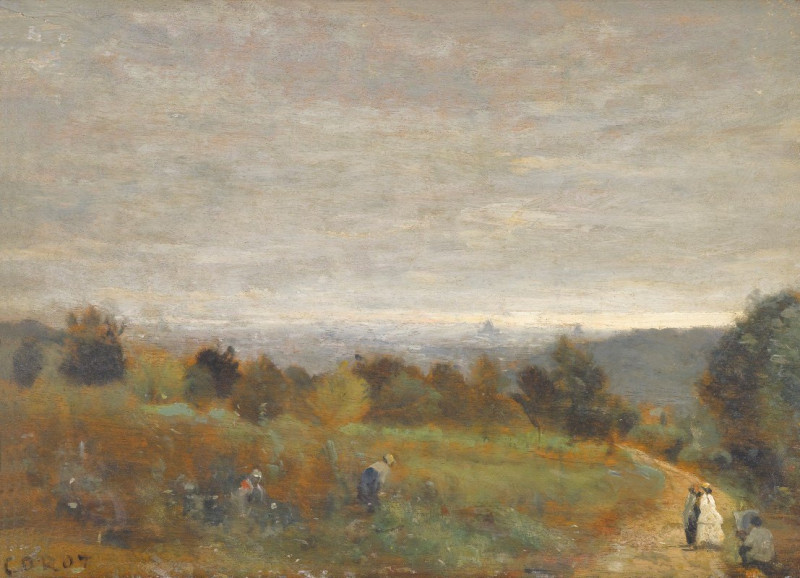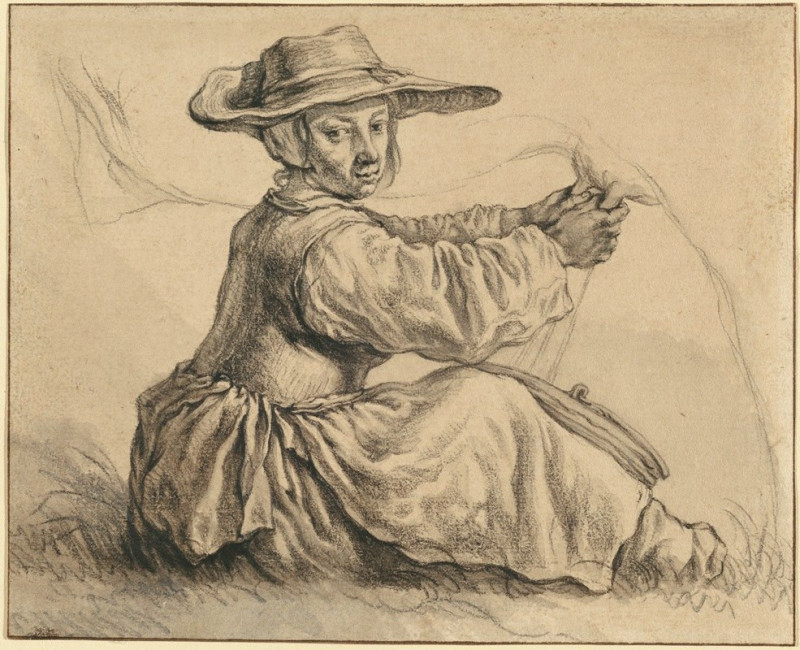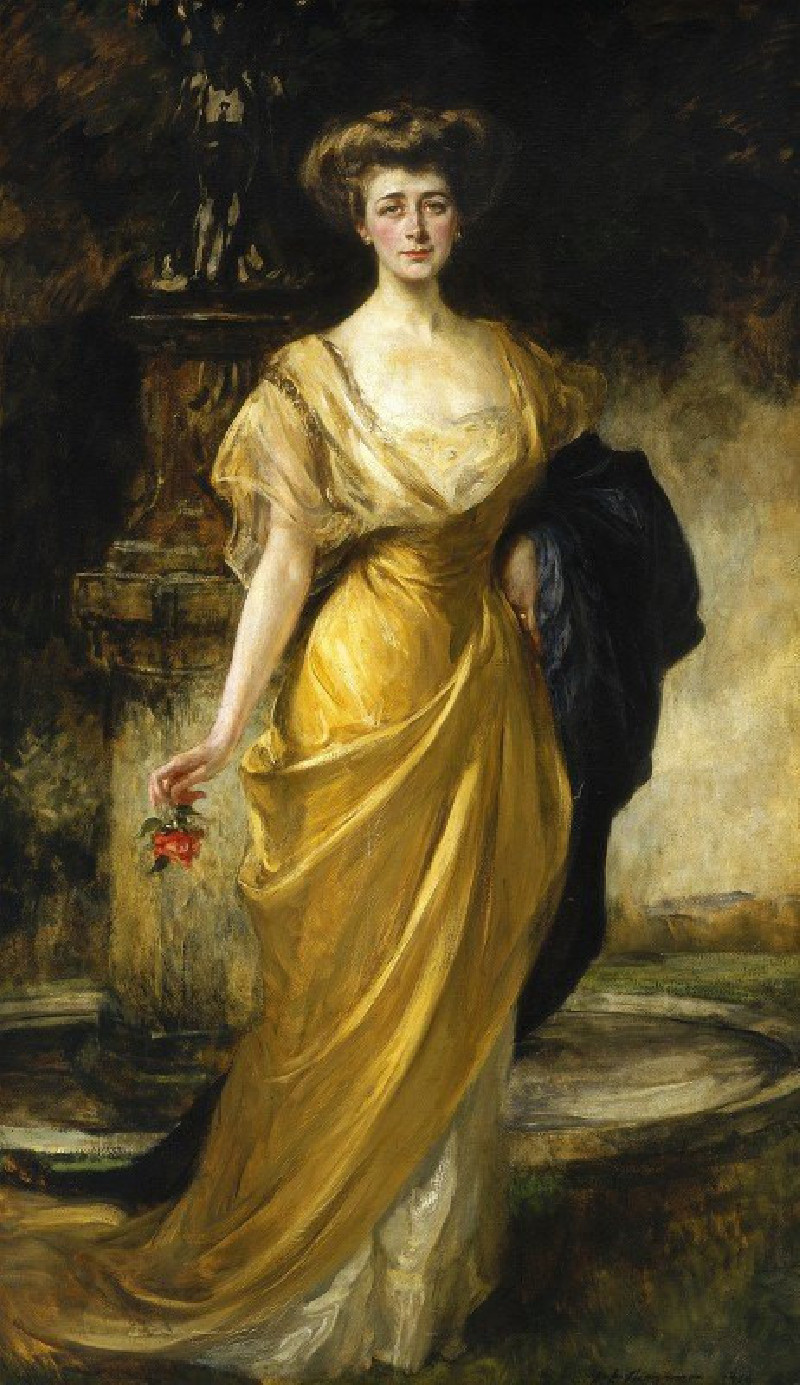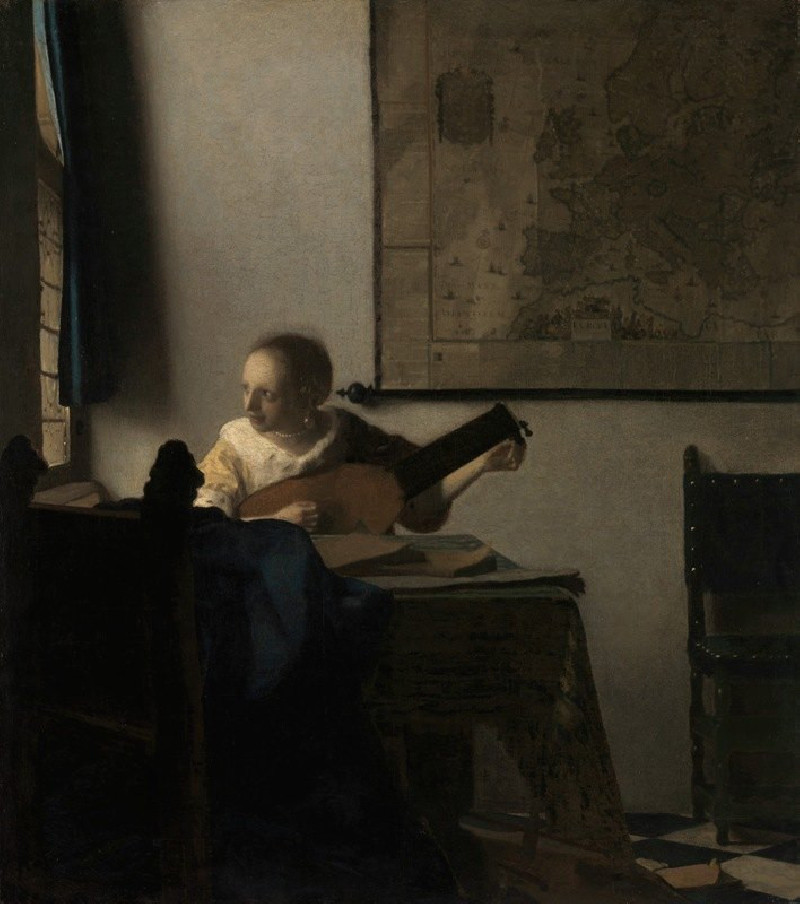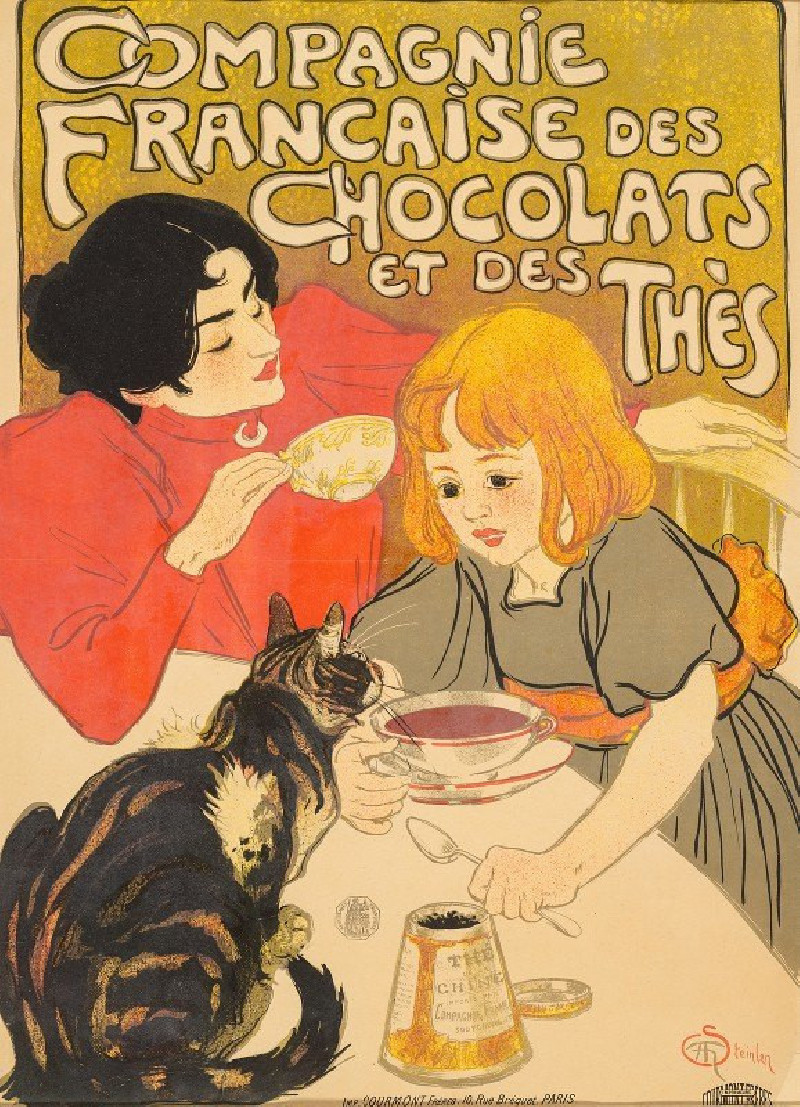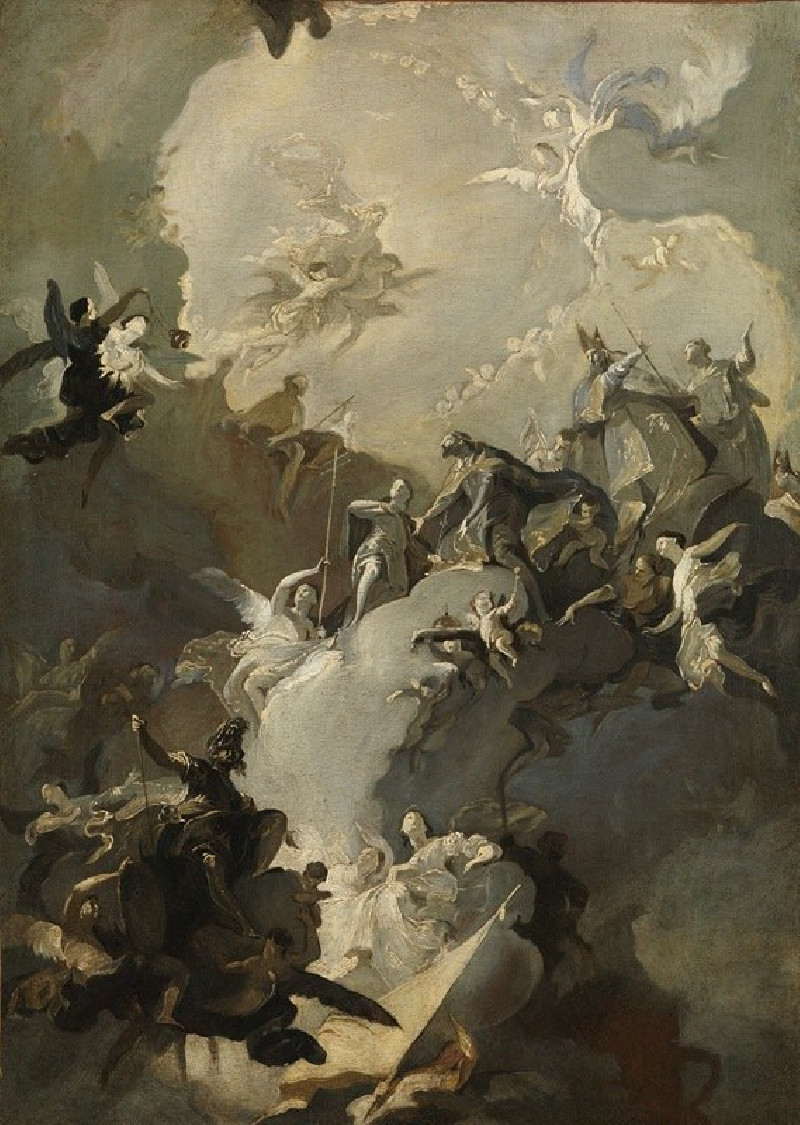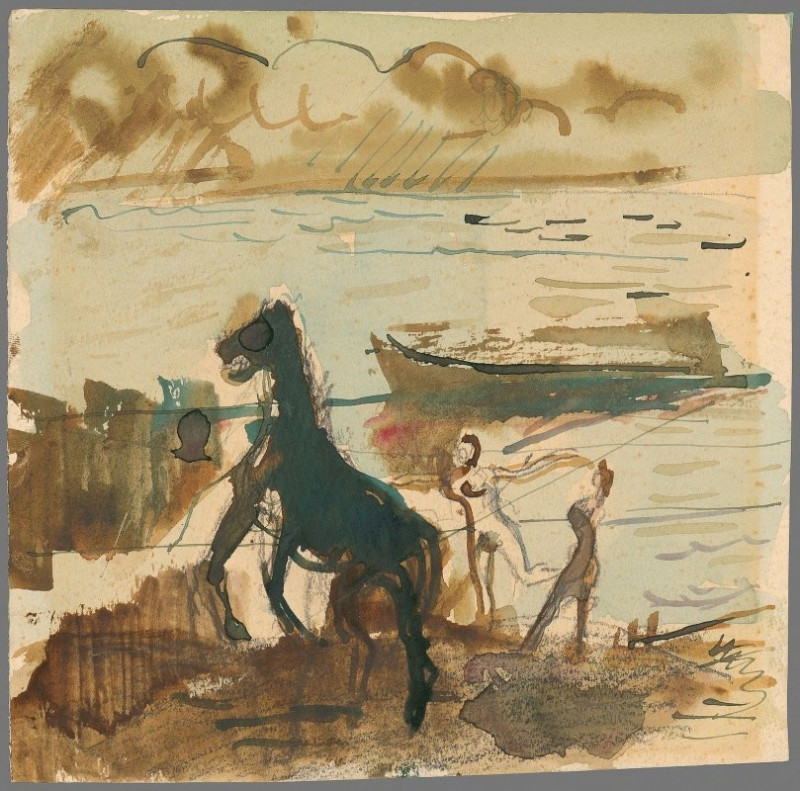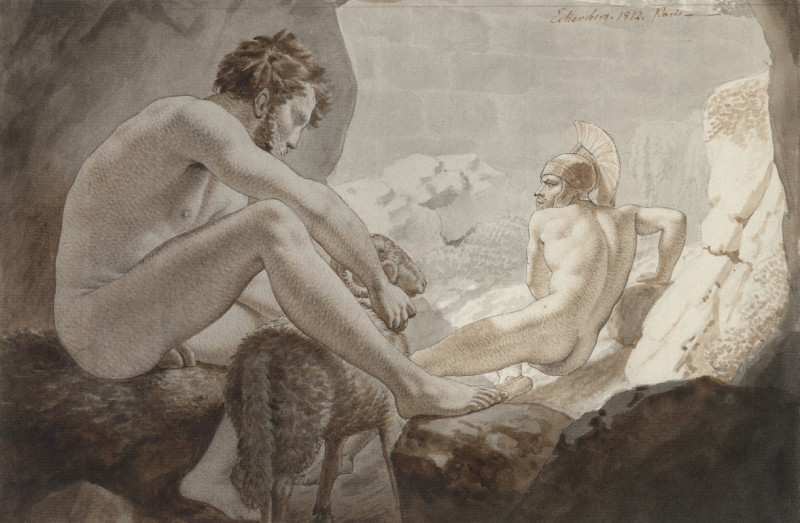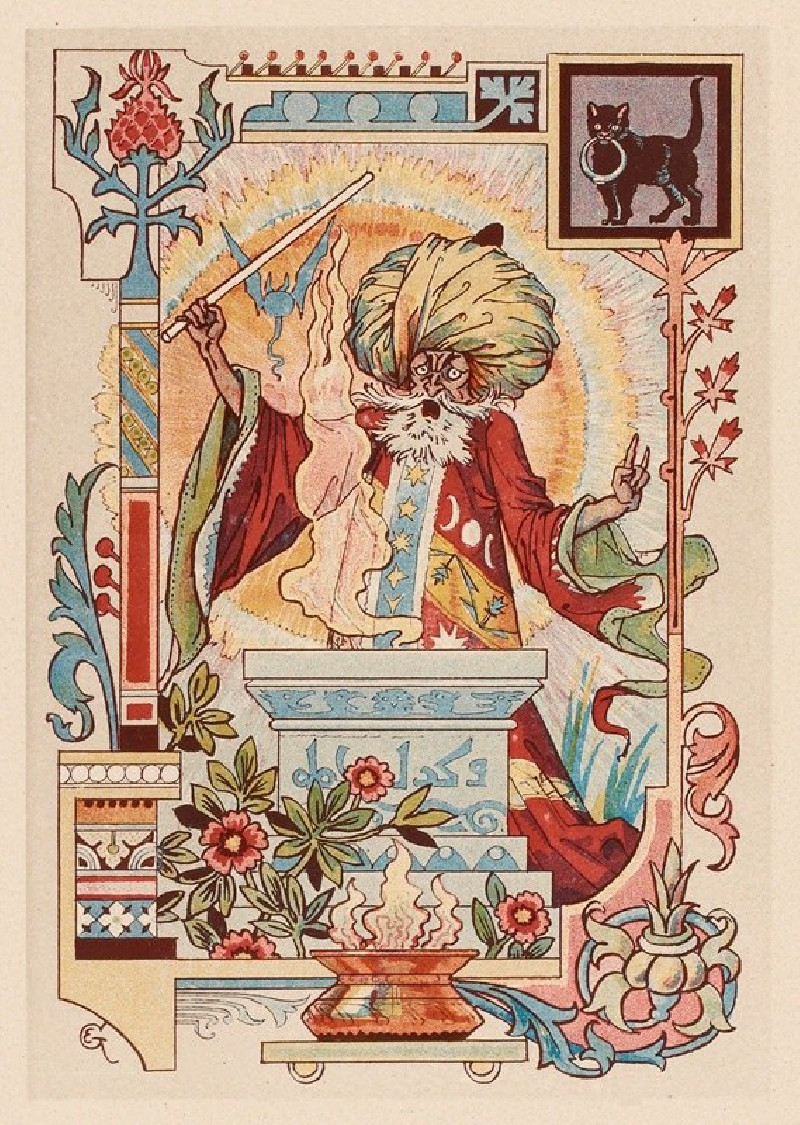Campagne Italienne (1840)
Technique: Giclée quality print
Recommended by our customers
More about this artwork
This enchanting landscape, titled 'Campagne Italienne' (Italian Countryside), is an exquisite example of the work by celebrated French painter Jean-Baptiste-Camille Corot, created in the year 1840. Known for his pivotal role in landscape painting, Corot presents a beautifully poised, harmonious vision of the Italian countryside that has captivated audiences for centuries.In 'Campagne Italienne', Corot masterfully renders a serene yet dynamic scene. The painting depicts a tranquil, pastoral landscape primarily composed of rolling hills and a variety of trees that exhibit Corot’s signature attention to botanical detail and texture. The foreground features two figures engaging with the environment: one sitting thoughtfully overlooking a gentle river, and the other trailed by a shimmering water body, perhaps engaging in a casual exploration of the surroundings. These characters bring a human element to the serene wilderness, suggesting a narrative of leisure and contemplation amidst nature.The palette is subdued yet rich, with earthy tones that suggest the warmth of a late summer afternoon. Corot’s use of light and shadow not only highlights the natural contours of the landscape but also breathes life into the scene, making the viewer feel the quietude and the gentle passing of time in the countryside.The distant rolling hills fade into a hazy, soft sky, demonstrating Corot’s skillful handling of atmospheric perspective—a technique that adds depth and realism to the landscape. This layering also directs the viewer’s gaze through the picture, from the intimate foreground to the expansive distance, inviting one to wander visually and emotionally into the peacefulness of the Italian countryside.
Delivery
Returns
Jean-Baptiste-Camille Corot was a French landscape and portrait painter as well as a printmaker in etching. He is a pivotal figure in landscape painting and his vast output simultaneously references the Neo-Classical tradition and anticipates the plein-air innovations of Impressionism.

